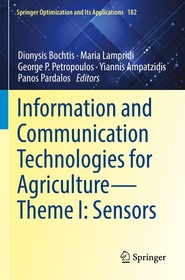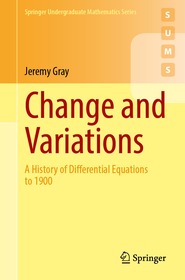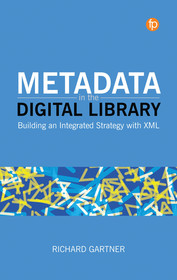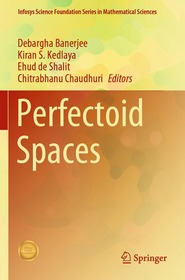
Information and Communication Technologies for Agriculture—Theme I: Sensors
Series: Springer Optimization and Its Applications; 182;
- Publisher's listprice EUR 139.09
-
57 687 Ft (54 940 Ft + 5% VAT)
The price is estimated because at the time of ordering we do not know what conversion rates will apply to HUF / product currency when the book arrives. In case HUF is weaker, the price increases slightly, in case HUF is stronger, the price goes lower slightly.
- Discount 20% (cc. 11 537 Ft off)
- Discounted price 46 150 Ft (43 952 Ft + 5% VAT)
Discounted price for customers subscribed to our weekly newsletter.
Subcribe now and take benefit of a favourable price.
Subscribe
Subcribe now and take benefit of a favourable price.
Subscribe
57 687 Ft

Availability
printed on demand
Why don't you give exact delivery time?
Delivery time is estimated on our previous experiences. We give estimations only, because we order from outside Hungary, and the delivery time mainly depends on how quickly the publisher supplies the book. Faster or slower deliveries both happen, but we do our best to supply as quickly as possible.
Product details:
- Edition number 1st ed. 2022
- Publisher Springer International Publishing
- Date of Publication 13 April 2023
- Number of Volumes 1 pieces, Book
- ISBN 9783030841461
- Binding Paperback
- See also 9783030841430
- No. of pages325 pages
- Size 235x155 mm
- Weight 522 g
- Language English
- Illustrations XIV, 325 p. 135 illus., 126 illus. in color. Illustrations, black & white 453
Categories
Applied mathematics
Data management in computer systems
Database management softwares
Management, corporate management
Enterpreunerships in general
More books in the field of economy
Further readings in mathematics
Environmental protection
Environmental sciences in general
Springer Yellow Sale
Applied mathematics (charity campaign)
Data management in computer systems (charity campaign)
Database management softwares (charity campaign)
Management, corporate management (charity campaign)
Enterpreunerships in general (charity campaign)
More books in the field of economy (charity campaign)
Further readings in mathematics (charity campaign)
Environmental protection (charity campaign)
Environmental sciences in general (charity campaign)
Springer Yellow Sale (charity campaign)
Long description:
This volume is the first (I) of four under the main themes of Digitizing Agriculture and Information and Communication Technologies (ICT). The four volumes cover rapidly developing processes including Sensors (I), Data (II), Decision (III), and Actions (IV). Volumes are related to ‘digital transformation” within agricultural production and provision systems, and in the context of Smart Farming Technology and Knowledge-based Agriculture. Content spans broadly from data mining and visualization to big data analytics and decision making, alongside with the sustainability aspects stemming from the digital transformation of farming. The four volumes comprise the outcome of the 12th EFITA Congress, also incorporating chapters that originated from select presentations of the Congress.
The focus in this volume is on different aspects of sensors implementation in agricultural production (e.g., types of sensors, parameters monitoring, network types, connectivity, accuracy, reliability, durability, and needs to be covered) and provides variety of information and knowledge in the subject of sensors design, development, and deployment for monitoring agricultural production parameters. The book consists of four (4) Sections. The first section presents an overview on the state-off-the art in sensing technologies applied in agricultural production while the rest of the sections are dedicated to remote sensing, proximal sensing, and wireless sensor networks applications.
Topics include:
- Emerging sensing technologies
- Soil reflectance spectroscopy
- LoRa technologies applications in agriculture
- Wireless sensor networks deployment and applications
- Combined remote and proximal sensing solutions
- Crop phenology monitoring
- Sensors for geophysical properties
- Combined sensing technologies with geoinformation systems
Table of Contents:
Section I: Overview: Emerging Sensing Technologies for Precision Agriculture (Pardalos).- Soil reflectance spectroscopy for supporting Sustainable Development Goals (Angelopoulou).- Proximal sensing sensors for monitoring crop growth (Hallik).- Section II: Wireless network systems applications: Experimental performance evaluation techniques of LoRa radio modules and exploitation for agricultural use (Loukatos).- Evaluating the performance of a simulated softwarized agricultural wireless sensor network (M. Mostaco).- Smart agriculture: A low-cost wireless sensor network approach (Angelis).- Section III: Remote sensing applications: Potential of Sentinel-2 satellite and novel proximal sensor data fusion for agricultural applications (Pandžić).- Trends in satellite sensors and image time series processing methods for crop phenology monitoring (Verrelst).- Drone imagery in support of orchards trees vegetation assessment based on spectral indices and deep learning (Șandric).- Section IV: Proximal sensing applications: What does the NDVI really tell us about crops? Insight from proximal spectral field sensors (Atherton).- Geophysical sensors for mapping soil layers - a comparative case study using different electrical and electromagnetic sensors (Luck).- Geoinformation technologies in pest management: mapping olive fruit fly population in olive trees (Papafilippaki).- In-field experiments for performance evaluation of a new low-cost active multispectral crop sensor (Tagarakis).
Recently viewed







